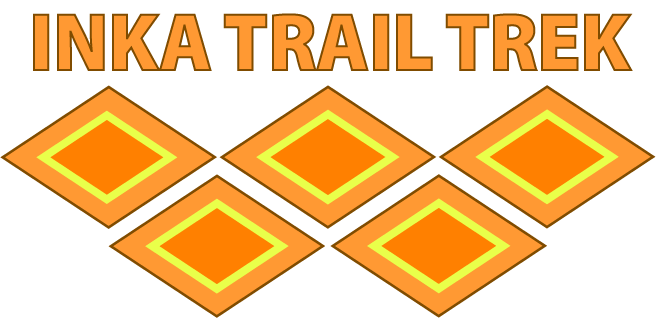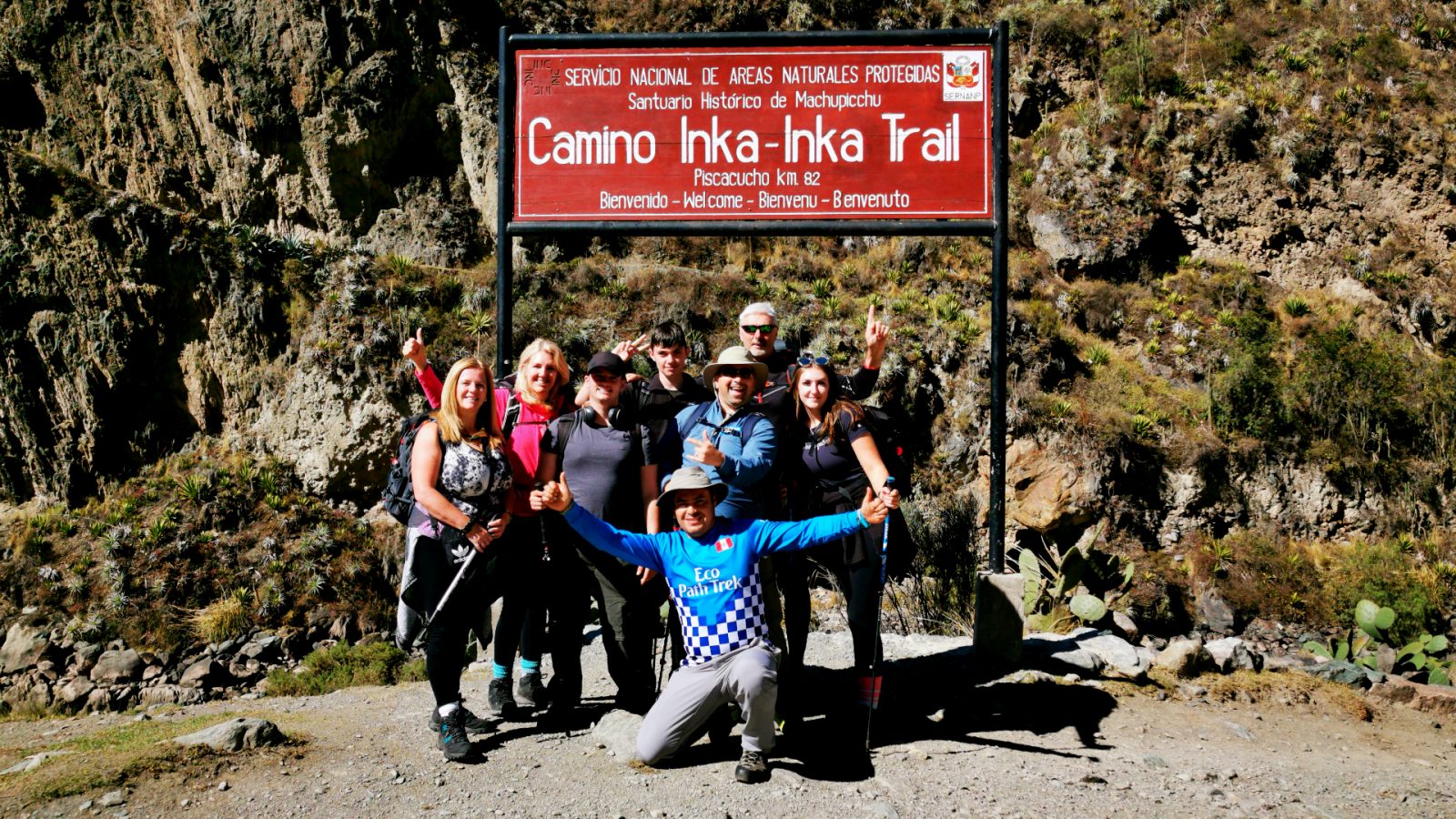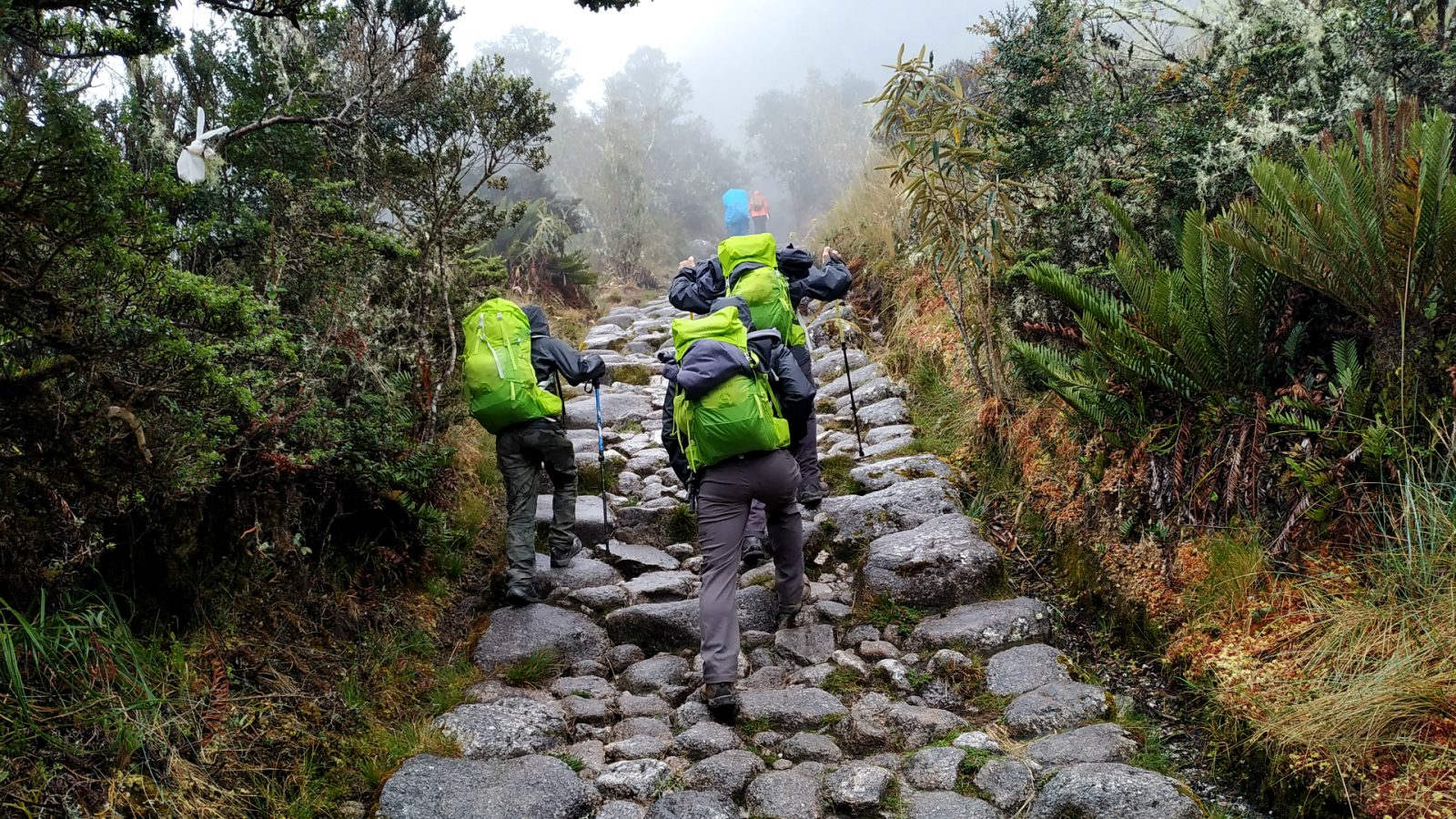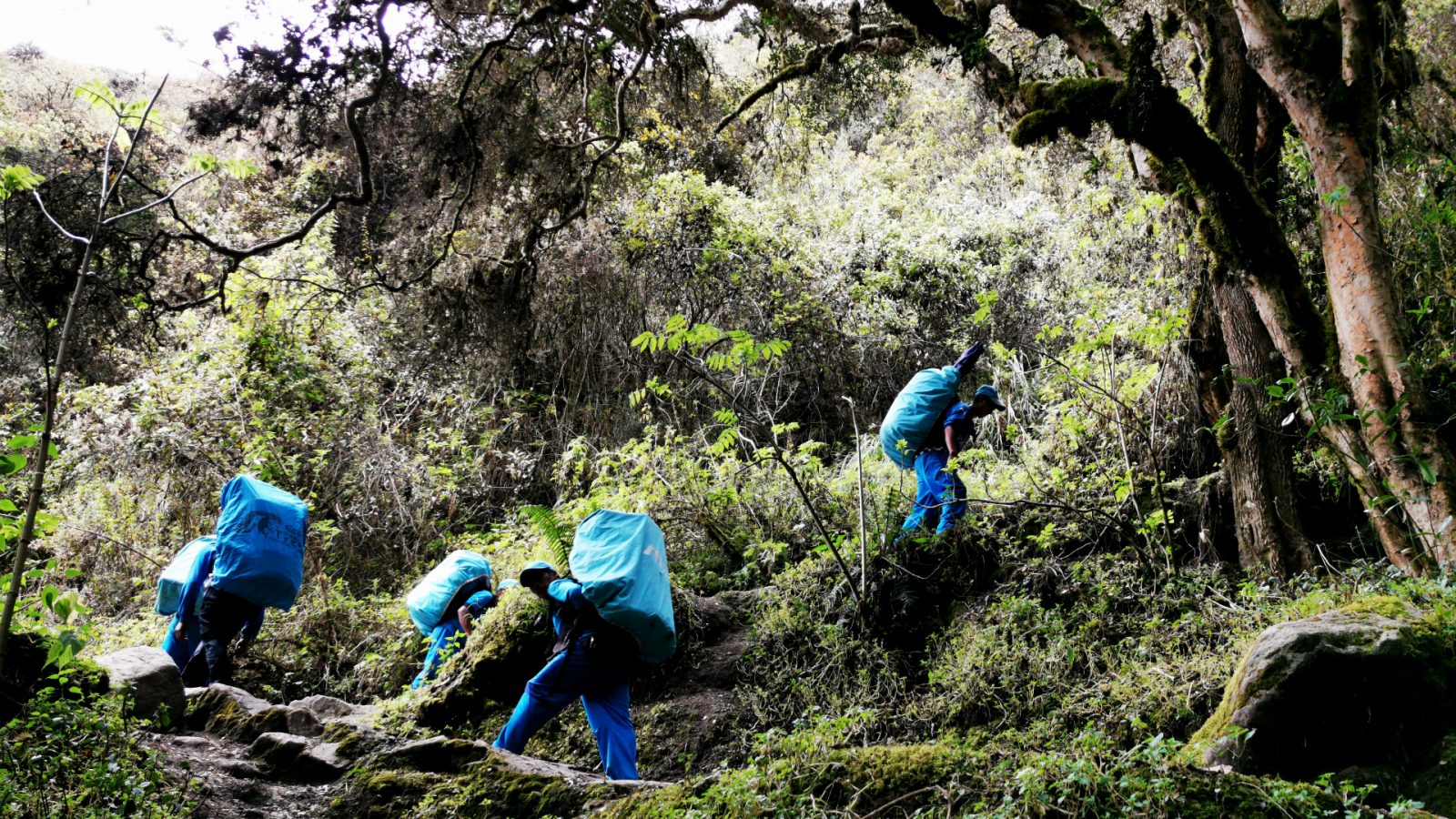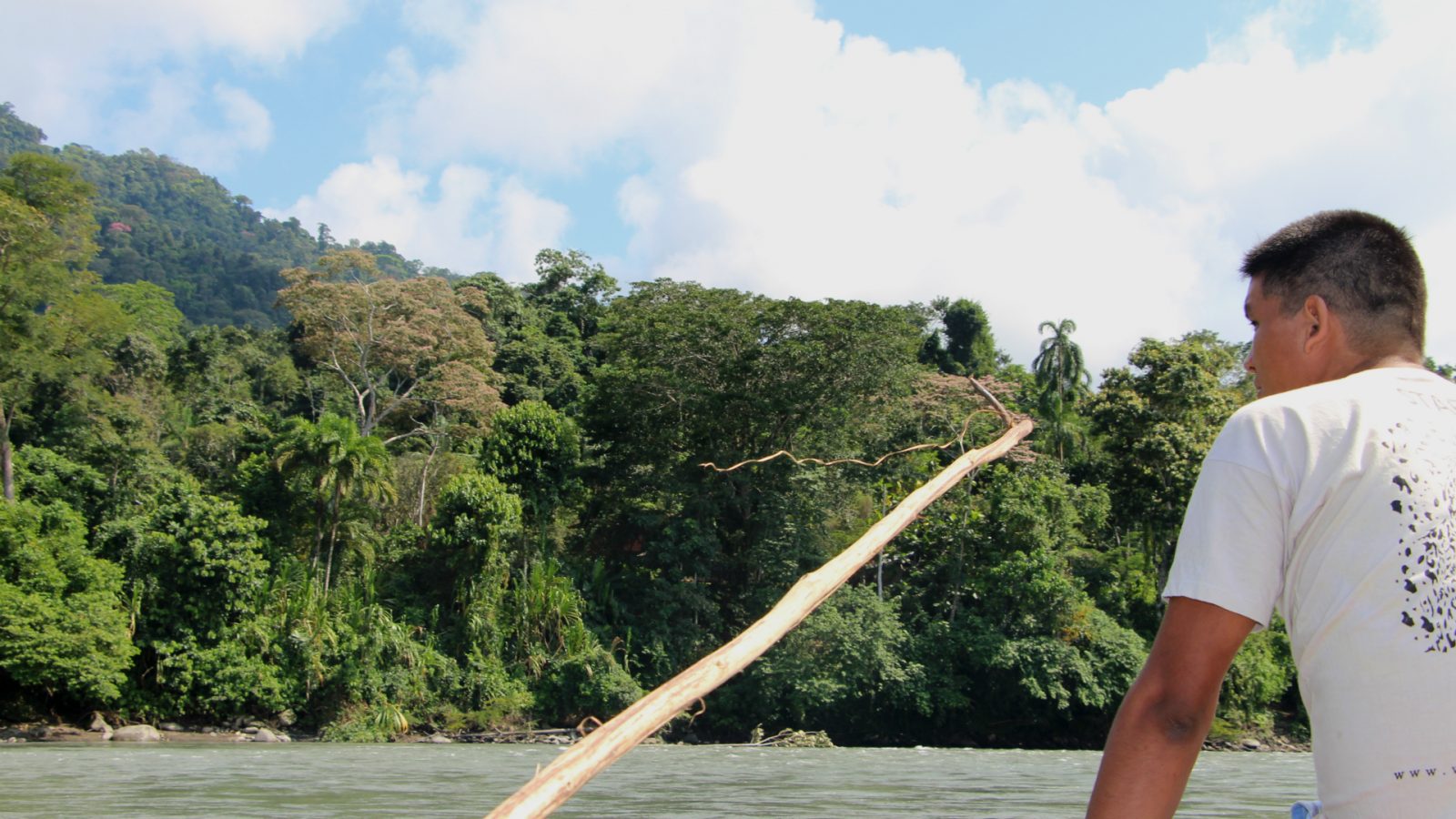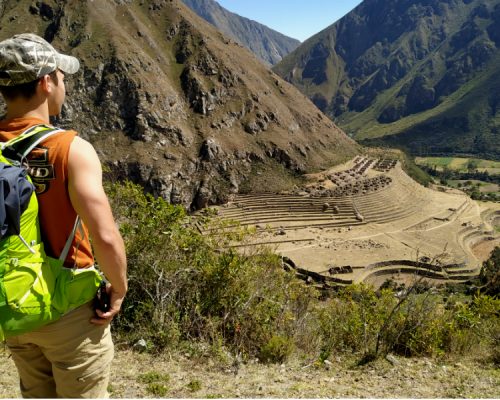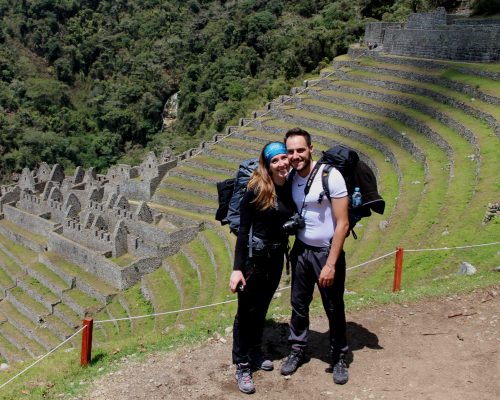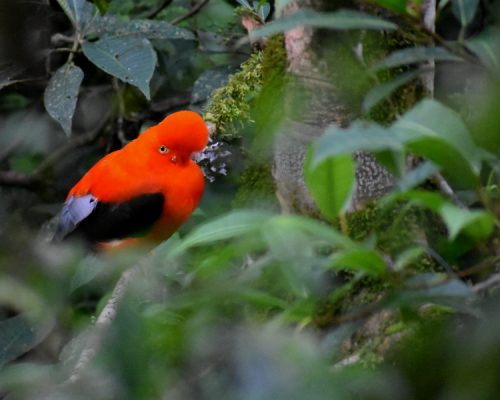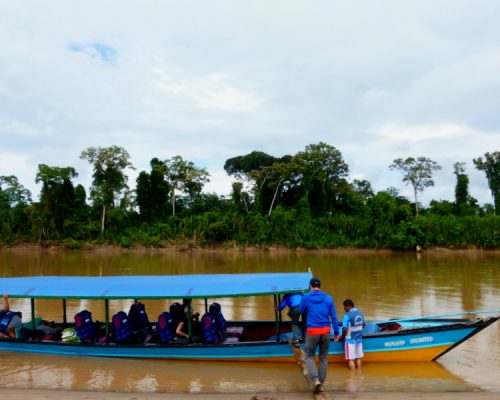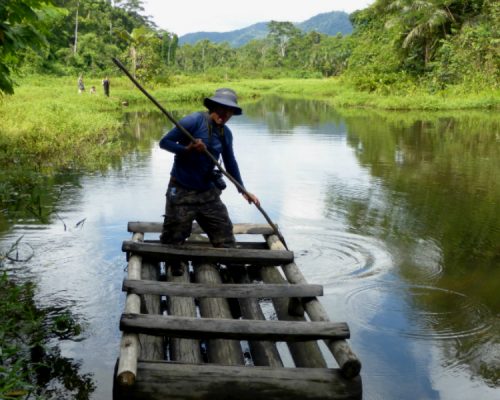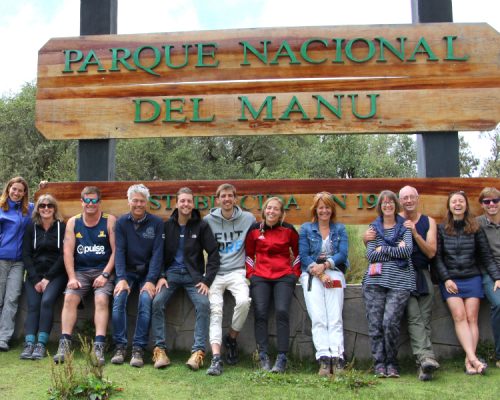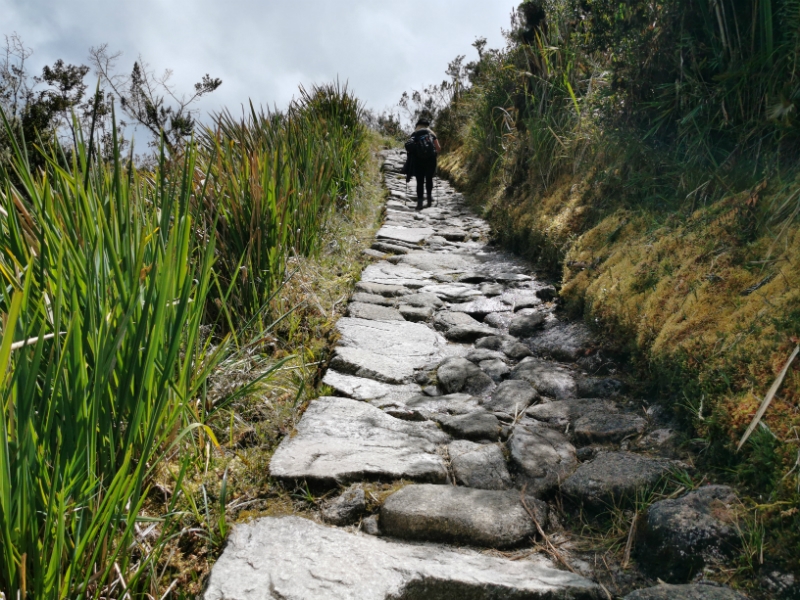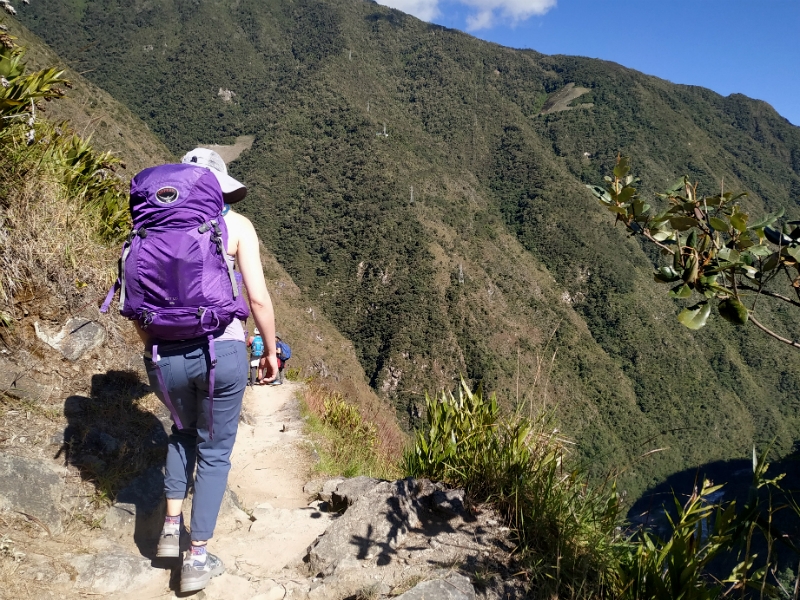MANU AMAZON JUNGLE TOURS FAQ
-
MANU AMAZON JUNGLE TOUR PRE-DEPARTURE BRIEFING?
You will have a pre-departure briefing at your hotel the day of your arrival or one day before at 6:00 pm, we will send you one of our tour guides who will explain you all the manu jungle tour program day by day, also he will answer any remaining questions about the tour, then you can finalize the payments of your balance.
-
WHAT IS THE DIFFERENCE BETWEEN THE RESERVED ZON AND TEH CULTURAL AREA? HOW TO DECIDE BETWEEN THE MANU BIOSPHERE RESERVE TOUR AND THE MANU CULTURAL ZONE?
The Manu National Park is divided into three parts: cultural zone , reserved zone or core zone and the intangible zone. The cultural zone and the reserved zone are for tourist use. The intangible zone is used exclusively for scientific studies and with special permits.
Manu Amazon Jungle is a relatively remote area with little human population, and is has an extremely high biodiversity and very good opportunities to observe animals in the rainforest (especially at the clay licks), which is not very easy due to the dense vegetation.Manu offers ideal conditions for nature and animal lovers, photographers and ornithologists.
You will not find mass tourism here. In August (high season) there are most visitors around, so it gets a bit busy.
Please note that it is not always possible to exactly stick to the program on a rain forest tour and small changes to the program may occur. In case of unusual situations caused by the weather (for example ) our guide will look for the best alternative and always try to include all activities of our program. The guide will explain the situation to the group and you are welcome to ask questions.
Both tours, the Manu Biosphere Tour and the Manu Cultural Area, take you to the lowland rainforest of Manu and you visit
A.- MANU CULTURAL AREA
In the cultural zone of Manu, you can see two types of ecological floors, the first place to visit will be the cloud forest, where two species of Monkeys can be seen, and the national bird of Peru. And it is also a good place to observe endemic birds, such as trogon, quetzal, eagles, owls, and several species of hummingbirds. You can also see a variety of orchids, begonias and medicinal trees. Then a boat tour is made to the lodge inside the jungle, where walks are made to identify mammals such as sachava, monkeys, alligators, jaguars. And also take the opportunity to visit the parrot and macaw collpa.
It is called a cultural zone or buffer due to its proximity to the native villages that inhabit the Manu National Park such as Matsiguenka, Nanti, Yora, Haranbut, Yine and Quechua divided into the towns of Callanga, Huacaria, Keros, Shintuya, Diamante and Palotoa and they feed on house and fish therefore there is not much diversity.
On the Manu Cultural Zone you can enjoy the unique scenery of Rio Manu’s primary lowland forest. Inside the Reserved Zone (Tourist Zone) we visit the Machu Wasi lake to observe Giant Otters, birds, Mamals, Macawclaycliks, several insects. The scenery on Rio Manu is impressive and chances to observe wildlife on the river banks are very good. (If we are lucky we may see a jaguar.) But we spend considerably more time into the deep rainforest.
B.- MANU RESERVED ZONE
The Manu Biosphere Tour is the more active tour, we spend more of 5 days in the area of Limonal and Blanquillo and we have plenty of time for walks on the trails. Our program is flexible and we have good opportunities to see a variety of animal species. Direfent lakes (to observe Giant River Otters), the big Macaw Clay Lick at Blanquillo as well as the Mammal Salt Lick, located at walking distance from our Lodge.
- The 5 day tour is the shortest tour to the Manu lowland, but shows you the highlights of Manu.
- On the 7 day Biosphere tour we have one day (day 5) on which the group can decide what type of animals you would like to prospect for again. This day is especially rewarding for bird, tapir and monkey observation. In case of bad weather conditions we are flexible enough to modify the itinerary according to our needs and have more options to see animals. On this tour our return journey takes us back to Atalaya and through the cloud forest.
- On the 8 day tour we have 2 full days inside the Reserved Zone which gives us better chances for giant otter and monkey observation.
- Chances to observe animals are similar on both tours. The more time you spend in the rainforest the better the chance to see a bigger variety of animals.
-
WHY IS THE RESERVED AREA MORE EXPENSIVE THAN THE CULTURAL ZONE?
The trip to the area reserved by boat is approximately 7 to 8 hours every day and by bus only the first and last day according to your itinerary. Our company pays the Peruvian state for nature conservation, for the entry of each tourist, for each passenger and annually and this same money is for payments of the park guards of the Manu National Park. Each group of Eco Path Trek visits the Machiguenka house to buy their handicrafts that are made by themselves with plants, fruits and natural colors and we support in this way to generate economic income for the subsistence of the population of Tayacome and Yomibato. We also work directly with the natives of tayacome, yomibato, Diamante as crew members and boat riders in our company as connoisseurs guarantee our safety in the rivers of Alto Madre de Dios and Manu. Since they are native of the jungle.
-
HOW MUCH MONEY SHOULD I BRING?
300 to 400 soles should be taken for additional purchases on the tour such as handicrafts, soft drinks, moisturizers, beers and tips for the staff (motorcyclist, crewman, cooks and guides).
-
WHY SHOULD I TRAVEL WITH ECO PATH TREK?
Eco Path Trek is peruvian a local tour operator, offering an unforgettable experience since 2008 that works with social and environmental responsibility. Pay the Peruvian state to conserve nature to the National System of Protected Natural Areas. .All the guides and drivers are very knowledgeable professionals of the jungle that guarantee 100% their safety because they studied in the Peruvian jungle and specialized in Cusco.The company’s teams guarantee 100% YOUR SAFETY AND COMFORT. The prices are reasonable quality and price. Your trip is 100% guaranteed. If you travel with us you will be helping to protect the environment and therefore the economic sustainability of the native communities mentioned above.
-
HOW BIG ARE THE TOUR GROUPS FOR MANU AMAZON JUNGLE TOUR WITH ECO PATH TREK?
On our Manu tours the maximum group size is 10 people per guide. This way everybody can hear what the guide says and the group is not too big to observe animals. If there are 8 to 12 participants on a tour we take one more guide to divide the group in two while walking on the trails, but you may be sharing the bus and/ or boat. If there are more than 12 participants on the same tour we split in 2 groups, each with its own guide and boat.
-
ARE WE GOING TO SEE LOTS OF LARGE ANIMALS IN THE MANU AMAZON JUNGLE?
Our tour guides are very well prepared, they use all of their senses listening for small sounds like the breaking of a branch or fruit falling from the canopy, sniffing for animal odors, scanning the leaves above and below for motion. With this heightened attention and care to make little noise, the chances of observing large and small creatures is greatly increased.
The Manu Amazon Jungle has the greatest collection of life on earth, and so understandably, many visitors to the Manu Amazon Jungle expect to see lots of mammals. But it should be kept in mind that the story of the Manu Amazon Jungle is that it has high diversity, but low density. So on our trip we will see lots of kinds of creatures but not very many of each kind. But the beauty of this place is how the flora and fauna have evolved the wonderful and bizarre adaptations to thrive in this wilderness. With this perspective, travelers can directly experience and appreciate the infinite variability.
-
ARE YOU GUARANTEED TO SEE BIRDS AT THE MACAW LICKS?
The dry season is a good season to see the birds. The most likely reason for them to come together and eat the clay is because at certain times of the year there are hardly any fruits available for them, just seeds. Seeds in general have a toxic layer, exactly to prevent animals eating them. If the macaws eat them anyway, they have a build up of poison in their stomach. To neutralize the acids that the poison produces in their stomachs, they eat the clay. In the rainy season up until the beginning of the dry season (May) there are many fruits. So the macaws eat fewer seeds and more non-toxic fruits and feel less necessity to eat the clay. Usually it means there are fewer macaws present in the beginning of the dry season. In the middle of the dry season there may be about 100 to 150 macaws visiting the clay lick in one morning, whereas there may only be 10 to 50 at the end of the rainy season/beginning of the dry season.
-
IN MANU AMAZON JUNGLE THERE IS A LOT OF WALKING?
There is not a lot of walking in the sense of going far. All walking is done slowly. This is because most of what you find in the manu amazon jungle is vegetation and to be able to pick out the animals you have to take your time to look around, and listen as well.
For the manu amazon jungle 7-days tour, there are the following walks: The first day of the tour has an afternoon walk of about two hours. The second day is mostly spent looking for birds and animals on the Alto Madre de Dios River, with less walking than the other days. The third and fourth days feature a short walk to Lake Salvador, and various different walks in the Reserved Zone and on trails around the accommodation. The 5th & 6th day you walk maybe one or two hours in the Blanquillo area. The seventh day there is no walking at all.
-
WHEN IS THE BEST WEATHER TO VISIT THE MANU AMAZON JUNGLE ?
As local travel agency that we travel all the time and organize trips, We would recommend you to travel from April to January, this is the good time to visit the Manu Amazon Jungle and all over of Peru.
- From April to May is the transition months of the end of the raining season with moderate rainfall usually is raining only one or three hours a day but not every day.
- From June to October is our dry season, but the Manu Amazon Jungle is well known as the rainforest so even at this season we may have some rainfall not as much like in the rainy season.
- From October to January is the transition months which is the end of the dry season and the beginning of the rainy season and there is moderate rainfall usually is raining at nigh one or three hours by night, but not every day.
- From the ends of January, February and March is really our rainy season until the beginning of April at this time of the year there are some big landslide that block roads and the rivers in some areas floatplanes at this time some village, towns and cities have no road connections just for a couple of days.
-
WHAT ARE THE TEMPERATURES LIKE IN MANU AMAZON JUNGLE?
On the first day of your tour we travel over the Andes, where you should have a sweater and wind & waterproof jacket. In the afternoon, reaching the cloud forest temperatures are more pleasant.
The first night you spend in the cloud forest, at 1600 m., you can expect temperatures between 12 and 18°C (53 to 62°F), and reaching the lowland forest you should expect between 26 and 36°C (78 to 95°F) during the day and around 20 to 26°C (66 to 78°F) at night.
However, cold winds from Patagonia may reach Manu Amazon Jungle and the temperature may lower to about 10 degrees Celsius (50F). These “friajes” are more common during the southern hemisphere’s wintertime (between April and the end of August).
On some occasions we can get a cold front (“friaje”) from the south, this occurs mainly during the months of May to July/ August (dry season). When these winds reach the lowland forest, temperatures may go down as far as 14 or 10°C (50°F), which feels colder due to the humidity in the rainforest.
-
DO I HAVE TO BE FIT FOR A MANU AMAZON JUNGLE TOUR? ARE THE WALKS CHALLENGING?
Manu Amazon Jungle tours can be done with normal fitness by people of all age groups. You should be able to walk medium distances (for about 2 – 3 hours) and on often uneven surfaces. Make sure you bring good walking shoes.
If you are travelling with children, please let us know in advance for further recommendations, depending on the age of your children.
On a Manu Amazon Jungle tour you spend some time travelling by bus and by boat – this varies according to the tour (e.g. on the National Park Tour you spend more time in the boat) and we do walks that usually do not exceed 3 hours at a time. We don’t have to cover big distances on the walks; we will often walk slowly or stop to observe animals and plants on the way. Sometimes we need to listen, wait and have patience. You only need to bring a day pack on the walks. Night walks are optional and usually take about 1 hour. You are not expected to carry your luggage to the lodge, but help is appreciated.
Due to the humidity and warm temperatures some people may feel a bit weak or faint, but there normally is a short ‘siesta’ at midday and you have the possibility to stay at the lodge instead of participating in a walk. In the rain forest it ‘s important to drink a lot.
A rainforest tour is not a ‘comfort tour’, but if you bring appropriate gear (please see our packing list) you will have an incomparable experience.
-
WHAT KIND OF TRANSPORTATION DO YOU PROVIDE FOR THE TRIP INTO MANU AMAZON JUNGLE TOURS?
As several days of our tours include road travel, Eco Path Trek emphasises the importance of safety and travel comfort. All vehicles have special adaptations for driving unpaved roads. Depending on the number of people in your group, you can be traveling by 4-wheel drive truck, a mini van, or a medium sized bus. All drivers are experienced on the Manu Amazon Jungle Roads. Additionally, Eco Path Trek has its own set of rules to be followed by the drivers, to reach higher safety standards, giving you more pleasant travels.
-
IS THERE A LUGGAGE LIMIT?
Please bring a maximum of 12 kg of luggage per person on your Manu Amazon Jungle Tour. Especially during the dry season (approx. from June to September) the water levels of the rivers are low; therefore we try to reduce the weight of our boat to make headway better and faster. We recommend to bring a waterproof bag or rucksack for the amazon jungle tours.
During the Manu Amazon Jungle Tour you can store the rest of your luggage at your hotel in Cusco. In case you have special photo equipment with a considerable weight please let us know in advance.
-
ARE PARTICIPANTS EXPECTED TO CARRY THEIR OWN LUGGAGE?
If possible, we ask you to carry your own luggage wherever necessary. While traveling, your luggage will be either in the van/bus or in the boat. One carries it only from the van/bus into the lodge or boat etc. However, for heavier luggage or parts hard to walk, the boatmen and the guide can carry it for you. Just let the guide know whenever you would like assistance
-
WHAT ARE THE BOATS LIKE?
Our boats are 15 and 16 m long with Yamaha outboard motors. They have wooden seats with cushions and backrests as well as a roof. There are life vests for all passengers. When travelling on the river in the rain you may get wet, so you should have your rain gear at hand. Our boat staff will also provide plastic covers to protect you if it rains. There is no toilet on the boat; please just let your guide know if you need to use the bathroom, so he can stop the boat. And you can make your needs on the banks of the river
-
DO THE BOATS HAVE A ROOF?
Yes the boats have a roof to protect you against the sun. However, if you are sitting on a moving boat, the rain always comes in on one side, and therefore we provide you with big plastic sheets to cover yourself without taking away your view of the rainforest.
-
WHAT IS THE FOOD LIKE?
Peruvian cuisine is really delicious and there is a good cook for every excursion as a local tour company we really work with locals farmer from the Andes and Amazon who produce organic products this are used in the different typical or Novo Amazon cuisine. Peru today is recognized as the first dining destination in the world.
For breakfasts there are omelettes, scrambled eggs, pancakes etc. The lunches in general consist of cold salads, since it is usually hot at that time of the day. The dinners feature soups (great Peruvian soups), a main course with meat for the first part of the tour and beans or lentils at the end part (since meat cannot be kept cool forever without electricity) and desserts of fresh fruits or puddings etc. You can also ask for a special diet, such as vegetarian, saltless or anything else that you need or prefer.
For drinking we have mineral water as much as you need, plus lemonades, coffee, tea, chocolate and herbal teas. There are places where one can buy beer or soft drinks, but you have to pay for those yourself.
-
IS DRINKING WATER PROVIDED DURING THE TOUR?, IS THE WATER SAFE TO DRINK?
We bring bottled mineral water from Cusco for the entire tour, for every excursion in big bottles and this is drinkable and perfectly safe during trip. The water in the bathroom is not for drink is only for body cleaning but this water is clean.Please bring a big water bottle for the first day of the tour (min. 3 lt) as it is complicated to get out water for you during the first day’s bus ride. Then please keep your water bottle and you can refill it every day in the morning and/ or evening.
Due to the high temperatures in Manu Amazon Jungle, it is important that you have to drink plenty of water. Please help to protect the environment and avoid buying plastic bottles as these are not yet recycled properly in Peru.
-
WHAT IS THE RISK OF CATCHING A TROPICAL DISEASE OR ATTACK BY WILD ANIMALS?
There is very little risk to get a disease on our trips. Especially in Manu Amazon Jungle Area we are in the wilderness, far away from areas where diseases are. Our cook’s standards of cleanliness are very high and his splendid cuisine is designed for traveler around the world. Most wild animals are extremely wary of contact than humans.
-
WHAT MEANS OF COMMUNICATION ARE AVAILABLE IN MANU? CAN I FIND A DOCTOR IN CASE OF AN EMERGENCY?
When visiting Manu Amazon Jungle you should be aware that you travel to a remote area and there is no reliable mobile phone line nor internet access. In case of an emergency and for receiving short reports by our guides we have radio communication at the lodges. There is a satellite telephone in Boca Manu village and sometimes there is mobile phone access there as well.
Along our route there are 3 small hospital wards, apart from this the guide will carry a first aid kit throughout the tour.
Please inform us about diseases that may represent a risk on the tour, such as epilepsy or heart diseases (even if symptoms date back several years), before your tour.
In case of severe illness, a transport back to Cusco might become necessary. Please make sure that you have good and adequate travel health insurance.
-
WHICH VACCINATIONS DO I NEED?
Yellow Fever: Yellow Fever is transmitted by the Yellow Fever Mosquito. It is recommended to have a Yellow Fever vaccination for the Manu Amazon Jungle rainforest, especially as there is no therapy. If you plan to visit the Reserved Zone of Manu (on the National Park Tour 7 days) the Yellow Fever vaccination is obligatory because it may be controlled at the guard station in Limonal. The yellow fever is now valid lifelong (before it was valid for 10 years) and the vaccination should be administered minimum 10 days before visiting the lowland.
It is also possible to get a yellow fever vaccination (at Hospital Regional) in Cusco (cost is about 30 US$).
Tetanus: Tetanus is a virus infection caused by bacteria. You should have a valid tetanus vaccination for the rainforest and for Peru in general. Please check if you need to renew your vaccination before travelling.
Rabies: Rabies is a virus infection. During our Manu tours we spend all nights under mosquito nets, therefore the risk of being bitten by a bat is very, very low.
-
ARE THERE MOSQUITOS AND IS THERE MALARIA AND LEISHMANIASIS IN MANU AMAZON JUNGLE?
You need to be prepared for mosquitoes in the lowland of Manu Amazon Jungle (below 1000m). Please bring long sleeved clothes and mosquito repellent.
Malaria: The Malaria risk in Manu Amazon Jungle is extremely low (less than 0.1 %).
Long sleeved clothing and mosquito repellent is strongly recommended. Taking malaria prophylaxis is a personal decision, please consider that taking prophylaxis is not very secure (and check for the side effects of this medication !!). We suggest to bring a ‘stand by’ medicine in case you get Malaria (which can be detected by blood analysis), you can also get this medication here in Peru. In the south Peruvian rainforest there is only the Malaria type named ´Plasmodium vivax` which is completely curable.
Leishmaniasis: Leishmaniasis is an infectious disease that is transmitted by sand flies and affects the skin. The risk to get Leishmaniasis on a short stay in Manu is very low; the best form of protection is to wear long sleeves and use repellent.
-
WHAT ABOUT TRAVEL INSURANCE?
All our excursion are very well organize, the vehicles, motor boats services are new and well prepare and have insurance and passenger insurance. The motor boats are equipped with life jackets, roof in all the boat and personal seat. Every excursion is assisted by a tour leader.
But we recommend that you get International Medical Insurance,if you gonna need it in emergency cases, this Insurance will find you a competent doctor who speaks English and also includes air evacuation.
-
IS THERE ELECTRICITY AT THE LODGES IN MANU AMAZON JUNGLE?
At el Paraíso Amazon Lodge, where we spend the first night, there is electricity, but in the lowland there is none.
At Casa Matsiguenka a generator is normally available. Make sure you bring enough spare batteries for your camera and flashlight for the tour. We recommend to leave your, Laptop or IPad in Cusco.
There is no Internet access in Manu Amazon Jungle,there isn’t a mobile phone signal; only in some places you may receive calls occasionally.
We recommend to bring rechargeable batteries and to take used batteries back home, as they are not recycled in Peru.
-
WHAT SHOULD I BRING (SLEEPING BAG AND BINOCULARS)?
We have good accommodation in the Amazon Eco Lodges. You don’t need a sleeping bag for our standard Amazon Manu Jungle tours. All the lodges provide sheets and blankets as well as mosquito nets. In the lowland, normally the temperature doesn’t drop very much during the night.
It can get cold in the Amazon and rain, always is good to bring a good rain jacket. Cusco is located over 3320 mt. At night and in the morning Cusco is very cold, so a hat, gloves, and polartec fleece would be nice to have.
Binoculars are essential to a better appreciation and recognition birds and other animals. Binocular and sleeping bag both can be rented in Cusco.
Binoculars are essential for a Manu tour: to spot animals and get a closer view of them.
8 x 40, 10 x 40 or 10 x 42 magnifications are recommended.
Quality binoculars (Zeiss, Eschenbach, Leica, Minox und Nikon brands)
-
WHAT IS THE ACCOMMODATION LIKE DURING THE TOUR?
All nights in our standard tours are spent in lodges, some of them are our own lodges. All lodges have basic and clean private double rooms and clean bathrooms with showers. Sheets, blankets, towels and mosquito nets are provided.
On the Manu Amazon Jungle over 5 days , we spend 2 or 3 nights at Albergue Casa Matsiguenka. This lodge is built in typical Matsiguenka style and standard rooms are double rooms with shared bathrooms and showers. As in all other accommodations, sheets, blankets and mosquito nets are provided.
-
HOW DO I PAY?
Please read the tour program carefully before you book a tour, if you have any questions we will be happy to answer them. Changes in the itinerary may occur, due to the natural circumstances in Manu.
For a booking we need your full name, address, age, passport number and nationality. To secure your booking we require a down payment of (minimum) 300 US $ per person for the longer tours and 200 US$ per person for short tours.
The deposit can be made to our Reservation formular in our web page. Then we confirm by email the reception of the deposit and your tour booking(s).
The balance will be paid in cash in Cusco the day of your arrival (in Soles or US$). Payment by Visa or Master card is also possible, but has a fee of 5.5 %.
Credit card payment is not always possible and often expensive. We recommend checking credit card conditions (limits for ATMs) with your bank before travelling to Peru. There are ATMs at Banco de la Nacion and Banco de Credito where you can withdraw about 2000 Soles (aprox. 650 US$) per day or more. Note: the yellow “Globat Net” ATMs charge extra fees.
Please note that damaged US$ bills are not accepted in Peru, as it is foreign money. Even small rips are reasons for bills being refused.
-
WHAT HAPPENS TO THE WASTE WE PRODUCE DURING THE MANU AMAZON JUNGLE TOUR?
We try to reduce waste by avoiding tins and buying as much fresh produce as possible. All waste of our tour is gathered at the lodges and all organic waste is used as natural humus soil for our gardens. All inorganic waste is returned to Cusco by our bus. Please help gathering all waste and do not throw any waste on the trails or roadside (including cigarettes).
In case you don’t see a rubbish bin please ask your cook or guide.
